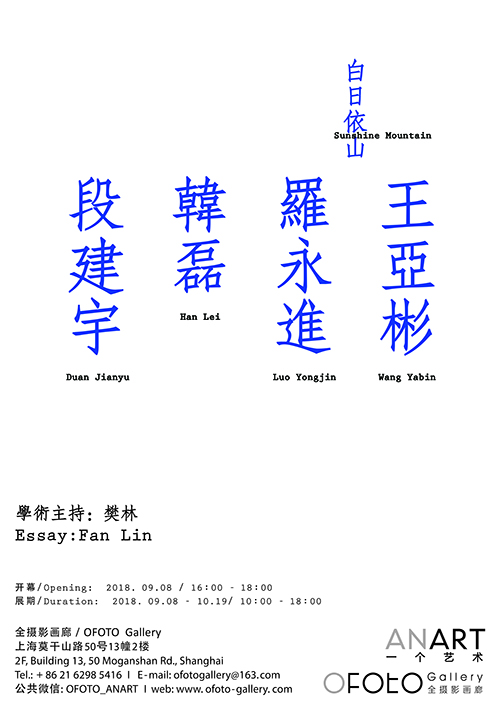When I took the invitation to write a critical article, I wasn’t quite sure what these four artists have in common that gives the idea to the organizers to put together this joint exhibition. They literally diverge in terms of visual languages. With all due respect, if nwe are to pinpoint them on a spectrum according to the realism levels in artistic concepts and endeavors, Duan Jianyu and Wang Yabin, Han Lei and Luo Yongjin show the efforts towards both the high and low. Of course, of course, I know it would be problematic to judge whose is elegant and whose is vulgar; therefore, I'll try to compare the tastes of the four artists according to their relationship with reality so as to share with the audience the enjoyment from this exhibition.
Like most artists who take modernity as their fundamental position, they face a reality that has shown more and more disorder and chaos disrupting the continuity of daily life. Whether in painting or photography, artists can no longer rely on traditional reference systems to observe and ingest objects. Their art practice each points to a serious fracture in discourse. Figuring out their positions is vital for gripping the logic of the exhibition.
For some people, entertaining in a nostalgia for the past is somehow superior to having hope for the future. This explains the large number of idyllic depictions we see in different exhibitions everyday. They feign their origins from the spirit that runs down in the classics. That is how art gets hollowed and crippled.
Obviously, true creativity requires first of all an artist to have the awareness to face the break between ideal and reality, concept and practice. Such a break could easily evolve into an inner apprehension that only a minority of artists could survive. Those who did and rightfully made their names in the art history have vigorously conquered the fear and make their great difference. Duan Jianyu and Han Lei made their works in a kind of uneasiness and even pain. These works, far from peace and tender, bears an anger that transcends the daily life. We recognize characters and scenes from their pictures with resonating anxieties as the artists took the power to convert the suffocation and depression of daily life into affective funny puns and wordplays. Also aware of the break between ideal and reality, concept and practice, Luo Yongjin and Wang Yabin appear to have a temperament that draws them towards the subjectivity seen in Classic Art. They still face the reality as individuals using typical technical discourse. If you refuse to blend into the immediate reality, you need to come up with alternative ways to distance yourself from it, so they both chose to revert to the ancient tradition to a certain extent. Based on the aesthetic taste that is passed down from the Song and Yuan Dynasties, they indicate a mild negation instead of an overturning. Therefore, when we look at Luo Yongjin's Songshan Mountain and Wang Yabin's pine trees, we expand the meanings of certain images in everyday discourse.
The discourse of daily life has long been smashed, and the artists are scattering from it. The four of these artists have mastered their own skills of building their discourse on the dependence on, craving for and resistance to the daily life, triggering an amazing flight of imagination.


